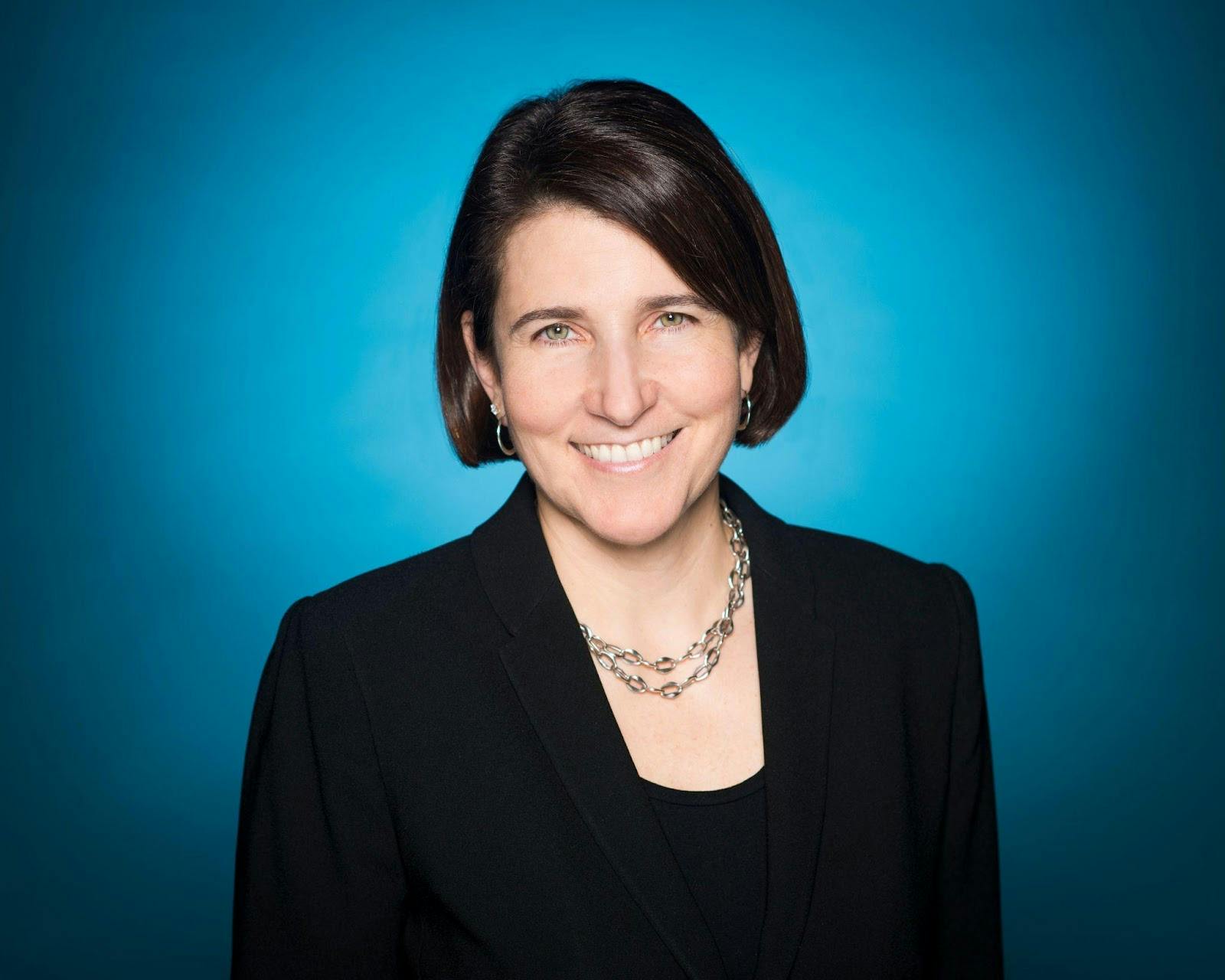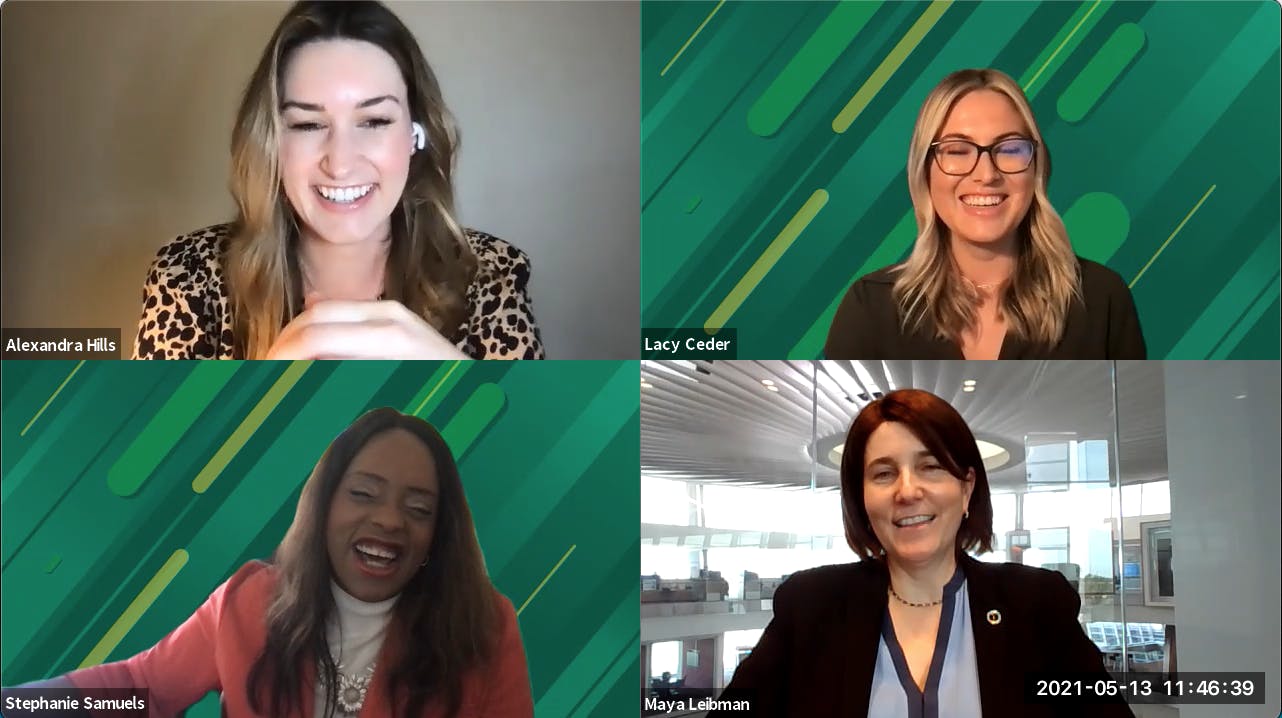Insight into the World of a Top-Level Executive
July 27, 2021
The MDBWomen’s Group recently hosted a company-wide event with guest speaker, Maya Leibman, Executive Vice President and CIO of American Airlines.
Maya covered a wide-range of topics, including her 27-year career at American Airlines, her successes and learnings along the way, and what it means to be the “air traffic controller” of American Airlines’ technological transformation.

Here are just a few of the highlights from the insightful event with Maya:
Question: Being at the technology helm of the world’s largest airline is quite an awe inspiring position. What does your role entail?
Answer: I have been with American Airlines for 27 years and have done a lot of different roles both inside and outside technology. I have done this job for the last eight or nine years and I have responsibility for all things technology. Everything from development to infrastructure, cyber, data and next generation tools and practices.
Q: You have been described as the air traffic controller of American’s technological transformation. What do you think they meant?
A: An air traffic controller is responsible for ensuring that everything goes smoothly at the airport which is a really complex place. My team and I have responsibility for ensuring that as we modernize the way we deliver technology that we do it in a safe and secure way and a way that recognizes the risks and seeks to minimize them. We are taking something really complex and making it as smooth as possible.
Q: How has COVID impacted your approach to technology innovation?
A: It has been impactful in so many different ways. The biggest is in the ways that we are working. Who knew that in the space of a couple of days we would all have to go home and find ways to connect, work and be productive? We would never have thought that it would be as easily done as it was. At American, we say that everyone has a responsibility for innovation.
Q: How do you empower different teams and measure how innovative they are?
A: What is hard with a big company is that people like consistency, standards, and predictability so processes get built around things and it’s like a fence that prevents innovation. We can’t hire people and put them in a tiny pen because they’ll never achieve what we hired them for. As leaders, we need to have the judgement to understand that while we need standards and consistency, we can’t have it at the expense of people thinking their best thoughts, spreading their wings, and producing new, innovative approaches not just to what we are doing but how we are doing it.

Q: How has your leadership style evolved over time?
A: Every positive attribute you can think of can be used to describe leadership. Personally, for me, it plays on both what your strengths and weaknesses are. One of my strengths is communication. I believe that part of my success as a leader has been the ability to communicate, stand up in front of a group, make compelling arguments and be somebody who can speak confidently with authority and knowledge. One of my weaknesses is listening. I’m not good at it; I interrupt people and am impatient. Honing my leadership skills means trying to get better at the things I’m not good at.
Q: You have talked about the JetStream Program quite openly. Why is that and what did you learn from it?
A: Jetstream was a disaster. It was a project that my group worked on for two years to develop this system that would re-write our reservation system. During that time, not one line of code was written and that’s how bad it was. We’ve all had experiences in our careers that we are not proud of and I think we should be open about them because it makes us more real and relatable. That’s life.
Q: How do you lead your team through those moments of disaster?
A: A lot of that has to do with developing an experimental mindset. Technology transformation is all about being willing to experiment and to learn and if it doesn't work, to pivot and do something different. That’s what Agile delivery transformation is all about. When you’re building technology you are doing something that nobody has ever done before so why do you think you are going to get it perfect the first time?
Q: You didn’t start at CIO. How did your other roles at American shape you?
A: I had ten or 15 jobs in the 27 years and each one has taught me different things. You just extract whatever you can from whatever role you are doing. The one thing I learned is that nothing is linear. We all got to where we are through twists and turns so you have to take your hands off the wheel a little bit and recognize that things are going to come along that you might not have expected. Don’t get too stressed about how your career is going. Everything really works out in the end.
Q: Do you have any advice on how women can overcome difficult conversations and negotiations on things like salaries?
A: Certain things are endemic to gender and I think it’s important to remember that the men you work with are not hesitating to go to their boss and say they want a review or more money. A lot of women think their work will speak for itself and that they don’t have to put themselves out there but you do have to have those difficult conversations and you do have to get comfortable with being uncomfortable about them. Find a friend and rehearse them before time or have somebody role play with you. We, as women, need to get to a place where we feel confident having those discussions.
Q: What has been the biggest challenge in your career and how did you overcome it?
A: The merger between American and US Airways was really hard. Hard from a work perspective and also from a people perspective. We were trying to bring two cultures together and two different philosophies around technology. It was a difficult time in a lot of ways. One of the things I insisted on was that we assume positive intention. You have to go into this assuming that everyone is doing the best possible thing. It’s so easy to vilify other people.
Q: How do you envision the transition back after COVID?
A: People are diametrically opposed on how they think about risk. It’s important when we return to the office to be empathetic with everyone’s re-entry into this process. For me, it’s not about whether we’re going to work from home, it’s about when we are going to work from home.
Thank you, Maya for a phenomenal event and for sharing your expertise with the MongoDB community. You are an amazing role model in technology and we appreciate you sharing your insights with us!